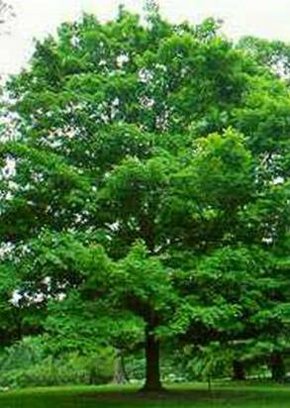Sugar Maple Tree
Category: Deciduous Trees

Facts about Sugar Maple Tree, "Scientific name for Sugar Maple Tree is Acer saccharum". Being a rich source of sugar, Sap obtained from Sugar Maple Tree is considered ideal for tapping. Importance of the tree to Canada can be illustrated by the presence of Sugar Maple’s leaf in its flag. This article is based on few distinguishing facts of the Sugar Maple Tree.
The sugar maple Tree is the Wisconsin State Tree and was selected as the state tree by school children in a vote statewide in 1893.
The Sugar Maple Tree grows up to 100 feet (30.48 meters) tall. Its main branch grows vertically upwards and the auxiliary branches spread away in a radial pattern. The Sugar Maple Tree can live up to 200 years. The leaves of the tree are usually bright yellow or orange colored, but they turn to fluorescent red-orange during the fall.
Habitat of Sugar Maple
The Sugar Maple trees are mostly seen in South-Eastern Canada. Other areas include North-Eastern United States as well. They may be seen in certain places (Not continuous) towards south, up to Tennessee.
Sugar Maple Tree leaves are made up of many colored pigments, green chlorophyll hides the colors during the growing season of spring and summer. As days get Shorter and cooler temperatures come in the fall, it cause the chlorophyll to break down and than the other color pigments can be seen.
Sugar Maple Tree growth is referred to as Meristem (The undifferentiated embryonic plant tissue from which new cells are created, as that at the tip of a root or stem). This tissue can be found at the tips of shoots and leaves. Inside the stem growth in thickness occurs at the vascular cambium.
Sugar Maple Trees make their own food from sunlight, carbon dioxide, water, and nutrients from the soil.
Bark of Sugar Maple
The bark of Sugar Maple is dark grey when it is young. The matured trees can be identified by dark brown barks. Fully matured ones have vertical grooves and ridges on their trunk.
Leaf of Sugar Maple
The leaf has five lobes, the inner three being bigger ones than the side ones. Leaves are round at the base and don’t have fine teeth. Their usual color is bright green with a patch of pale green underside.
Twig/ Bud of Sugar Maple
The twig of the Sugar Maple is shiny, brown, smooth and slender. The bud is usually of ¼ to 3/8 inch long. Its shape is conical and pointed. Surprisingly, the twig is brown in color.
A Full grown Sugar Maple Tree can absorb as much as 48 pounds (21.77 kg) of carbon dioxide a year. The same Sugar Maple Tree could also produce enough oxygen in a day for two people. In a single day, a large Sugar Maple Tree can drink up to 100 gallons (378.5 liter) of water from the ground and discharge it into the air.
You can tell a Sugar Maple Trees age by the number of growth rings. Growth rings size shows what kind of conditions accrued that year, the temperature and if it was a dry or wet year.
Bark of the Sugar Maple Tree protects it from the elements and is made up of dead cells.
Sugar Maple Tree roots usually grow two to three times the width of the tree branches. The ideal time to fertilize your Tree is in late fall or early spring. If you want to transplant a Sugar Maple Tree do it in fall, this is ideal for most trees.
Fruit of Sugar Maple
The seeds seem to join with each other in a straight line. They are greenish and round. They have wings which are arranged in an angle of 60 degrees to each other. The fruit matures in the fall. The seed along with the wing is about 1 inch (2.5 cm) long.
The Sugar Maple tree possesses average drought resistance. It shows best growth rate in moist soil conditions.

 Back To Category Deciduous Trees
Back To Category Deciduous Trees